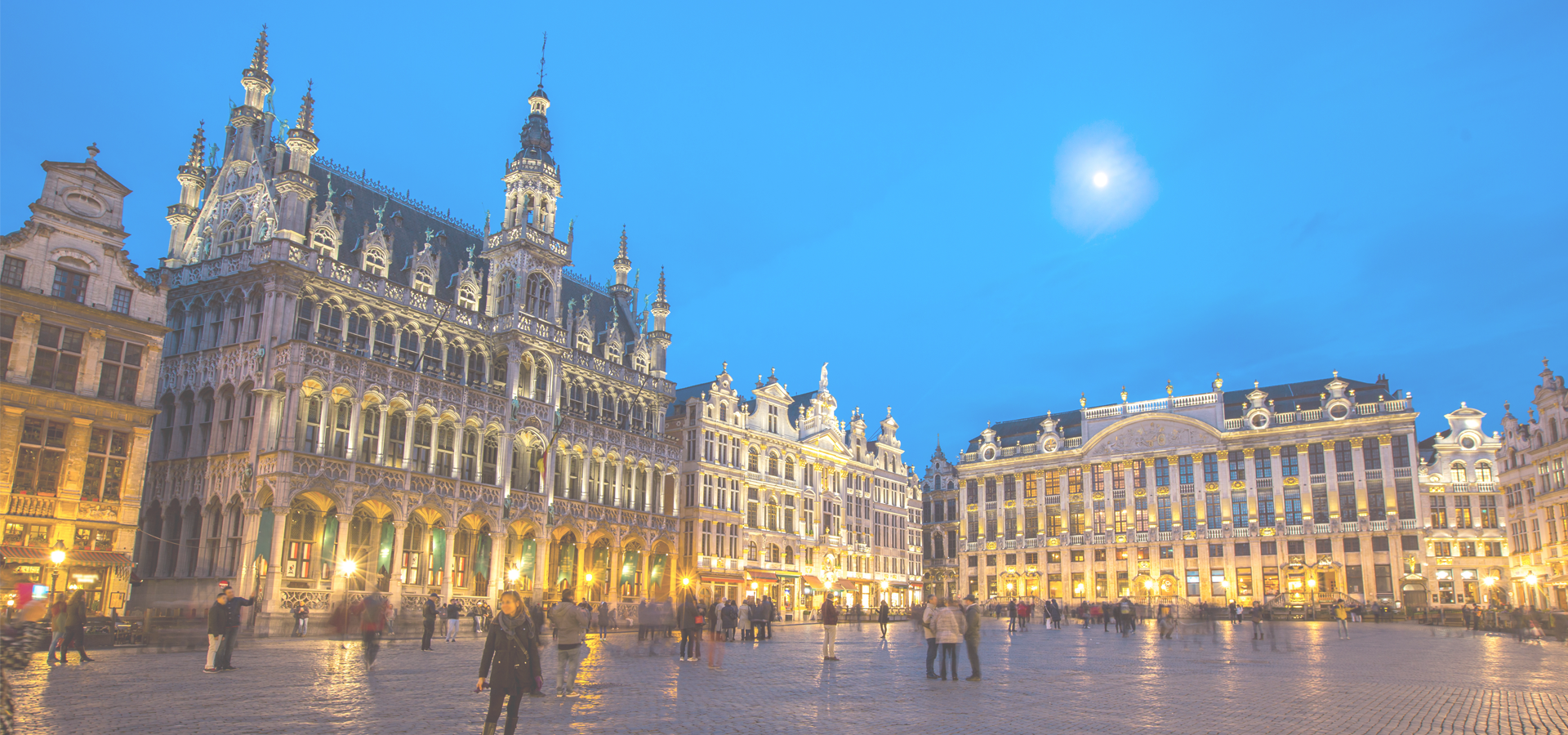Woluwe-Saint-Pierre, Brussels Capital, Belgium
🇧🇪 Woluwe-Saint-Pierre or Sint-Pieters-Woluwe is one of the 19 municipalities of the Brussels-Capital Region, Belgium. Located in the eastern part of the region, it is bordered by Etterbeek, Auderghem and Woluwe-Saint-Lambert, as well as the Flemish municipalities of Kraainem and Tervuren. In common with all of Brussels' municipalities, it is legally bilingual (French–Dutch). The total area is 8.94 km² (3.45 sq mi), which gives a population density of 4,722/km² (12,230/sq mi). It is mostly a well-to-do residential area, which includes the wide, park-lined, Avenue de Tervueren/Tervurenlaan, and the numerous embassies located near Marshal Montgomery Square. Of the three streams that once crossed the municipality, only the Woluwe, a tributary of the Senne, can still largely be seen today.
History The first appearance of the name Wolewe dates from 1117 and can be found in a charter from Forest. At that time, the original hamlet and its farms were dependencies of the Park Abbey near Leuven. The onset of difficulties can be traced to the middle of the 16th century, with the hostilities waged by Philip II of Spain against the heretical Protestants and the ensuing poverty and famine took their toll on the entire population. Safety and prosperity returned under the reigns of Archdukes Albert VII and Isabella at the beginning of the 17th century. The first grand alley linking Tervuren to Brussels, then known as the "Street of the Duke", dates from that period.
18th century until today The French Revolution was also a troubled period for Woluwe-Saint-Pierre. The roads became insecure, the religious freedoms were drastically curtailed, much of the local wild life was exterminated for food, and the lack of coal and wood forced people to use peat for heating. The local administration gained its independence from Brussels, obtained its first mayor on 26 May and its first municipal council in 1819. The commercial opportunities that opened up to the new municipality marked the start of a new era of wealth. The municipality did not expand very quickly, however, until the last two decades of the 19th century. New roads, such as the Avenue de Tervueren/Tervurenlaan, a new train track, imposing mansions, such as the Stoclet Palace, and Woluwe Park, were all built or designed between 1880 and 1910. An important race track, now demolished, was built in 1906. The residential areas came into being right after the First World War and further urbanisation took place after the Second World War. Nowadays, agriculture and fisheries, common before 1918, have completely disappeared. The area now depends nearly exclusively on the service sector of the economy.
Sights • The extensive Woluwe Park includes giant sequoias, cypresses, and a variety of birds such as mute swans, gulls, and grey herons. • The imposing modern Municipal Hall is open to visitors. • The municipality's main church (Saint Peter) was erected in 1755 on the site of a much older building and perpendicular to it, with funds from Forest Abbey. Traces of the older building can still be seen on the left of the current church. • Several turn-of-the-century houses and manors can still be seen today, such as the Stoclet Palace, which was built between 1905 and 1909 on a design by the Austrian architect Josef Hoffmann for the Belgian financier Adolphe Stoclet, and contains mosaics and paintings by Gustav Klimt. • The Bibliotheca Wittockiana houses one of the most prestigious bookbinding collections in the world. • The memorial on the Avenue Jules-César/Julius Caesarlaan to the Belgian Volunteer Corps for Korea, the force sent by Belgium to aid South Korea during the Korean War (1950–1953). • The Brussels Tram Museum displays a collection of trams and buses of different ages.
Europe/Brussels/Brussels_Capital

Woluwe-Saint-Pierre has a population of over 42,216 people. Woluwe-Saint-Pierre also forms one of the centres of the wider Brussels metropolitan area which has a population of over 2,548,941 people.
To set up a UBI Lab for Woluwe-Saint-Pierre see: https://www.ubilabnetwork.org Twitter: https://twitter.com/UBILabNetwork
Twin Towns, Sister Cities Woluwe-Saint-Pierre has links with:
🇨🇳 Chaoyang, China 🇮🇳 Chennai, India 🇰🇷 Gangnam, South Korea 🇺🇸 New Iberia, USA 🇷🇴 Pecica, Romania 🇷🇼 Ruyumba, Rwanda🇧🇪 Ixelles-Elsene 50.833
🏴 Shoreham-by-Sea 50.834
🇧🇪 Anderlecht 50.835
🏴 Chichester 50.836
🏴 Littlehampton 50.821
🇩🇪 Eschweiler 50.817
🇧🇪 Saint-Gilles 50.817
🇵🇱 Częstochowa 50.811
🏴 Portsmouth 50.8
🇳🇱 Zoetermeer 4.493
🇳🇱 Lansingerland 4.5
🇧🇪 Philippeville 4.55
🇳🇱 Capelle aan den IJssel 4.583
🇧🇪 Flemish Brabant 4.591
Locations Near: Woluwe-Saint-Pierre 4.46667,50.8333
🇧🇪 Schaarbeek 4.383,50.867 d: 6.9
🇧🇪 Brussels 4.371,50.836 d: 6.8
🇧🇪 Ixelles-Elsene 4.367,50.833 d: 7
🇧🇪 Schaerbeek 4.368,50.859 d: 7.4
🇧🇪 Vilvoorde 4.417,50.933 d: 11.7
🇧🇪 Saint-Gilles 4.35,50.817 d: 8.4
🇧🇪 Flemish Brabant 4.591,50.873 d: 9.7
Antipodal to: Woluwe-Saint-Pierre -175.533,-50.833
🇹🇴 Nuku'alofa -175.216,-21.136 d: 16712.8
🇦🇸 Pago Pago -170.701,-14.279 d: 15927.3
🇼🇸 Apia -171.76,-13.833 d: 15886.8
🇵🇫 Papeete -149.566,-17.537 d: 15657.3
🇺🇸 Hilo -155.089,19.725 d: 11918
🇺🇸 Maui -156.446,20.72 d: 11841.8
🇺🇸 Maui County -156.617,20.868 d: 11829.6
🇺🇸 Wailuku -156.505,20.894 d: 11824.2